Mark your calender. You can fund more getaways and be part of the heartland’s harvest this fall.
The Red River Valley Sugarbeet Growers Association (RRVSGA) is stepping up their recruitment efforts for the 2021 harvest this fall by hiring part-time drivers to transport truckloads of sugarbeets to and from the pilers in eastern North Dakota or western Minnesota. What is different than past years? Of the over 2700 farmer shareholders who make up the RRVSGA for American Crystal Sugar, many will be extending a hiring hand directly to you – the RVer to contact each farmer through the RRVSGA’s website.
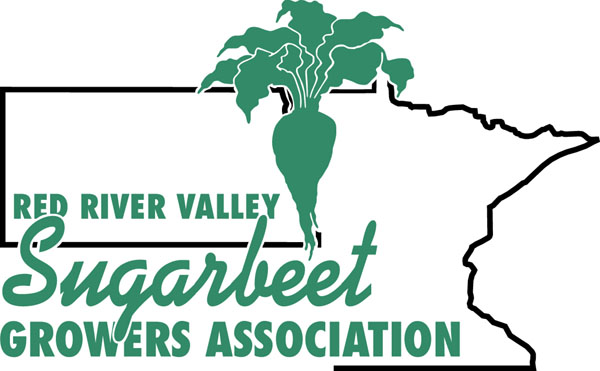
That’s a huge advantage over working through an employment agency that hires hundreds of folks part-time to work at the various piler locations in the Red River Valley of North Dakota and Minnesota. This is strictly a driving opportunity. If you’re thinking, but I don’t possess a CDL (commercial drivers license). No need. During harvest, North Dakota and Minnesota suspend the DOT rules requiring a CDL. Anyone with a valid drivers license can drive for a Red River Valley farmer.
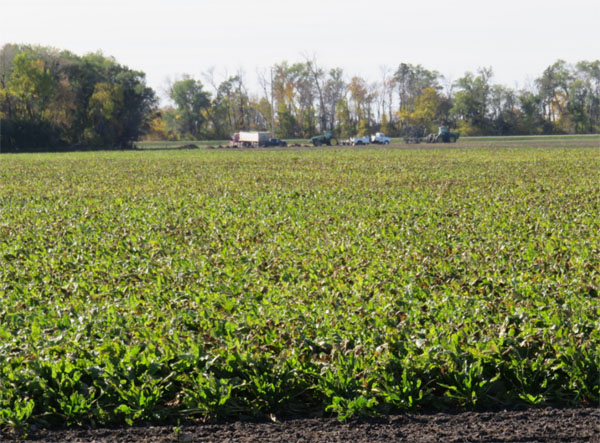
For those of you who have not experienced agriculture in its raw form, you will be in for a treat. Last fall we were recommended to contact a specific sugarbeet grower located near Casselton, North Dakota by an RVer we camped next to in Sundance, Wyoming. Schatzke Farms owners Jason and Tanya Schatzke, the largest farm for sugarbeets in that area, opened our eyes to the trials and tribulations farmers experience to bring a simple ingredient we rarely give a thought to and take so much for granted to our dining table. In addition, Harrison Weber, Executive Director of the RRVSGA works on behalf of farmer shareholders like the Schatzke’s and the 2700+ growers on important issues that affect the success of each year’s sugarbeet harvest. Harrison Weber’s office is the point of contact for the website that is expanding to include a harvest-jobs-section indicated in this URL address: https://rrvsaga/com/sugarbeet-harvest-jobs/. By the time summer arrives, this site will be complete with FAQs, job categories, specific job listings and how to apply, all accomplishable online. Therein you will be able to select a farm and contact a farmer directly, making your acquaintance personal, cutting out a middle-man. Remuneration will differ farm to farm as well as parking information for your RV. For us, the Schatzke’s provided a full 50amp hookup site for us in Casselton. The Schatzke’s also encourage drivers to bring along their spouse as these pictures were taken by myself from the right seat over a couple of days. Each day differed as we drove to and from different locations offering an interesting perspective. Some drives were only a few miles roundtrip to the piler, other days the drive distance one-way exceeded thirty miles. Regardless, for twelve hours, the driving itself was not difficult. Much of the Schatzke’s harvest is processed at the American Crystal Sugar plant in Moorehead, Minnesota, some 30 miles from their farm in Wheatland, ND.
First, a little history to enlighten you. The RRVSGA was formed in 1926 to insure proliferation of the sugarbeet industry for farmers who grew sugarbeets for the American Sugar Beet Company, later to become the American Crystal Sugar Company. In 1973, the farmer shareholders purchased the American Crystal Sugar Company to insure the future of sugar production remained successful. Until we participated in this harvest, we didn’t realize the importance of sugarbeets in everyday life. Sugarbeets and sugar cane share almost an equal percentage of your sugar usage today. Byproducts of sugarbeets end up in feed for farm animals, dog food and related sweetener products.
When we met with Jason Schatzke for the first time, he asked my spouse a simple question, “Are you capable of driving and maintaining six feet off the harvester at ten miles an hour? My spouse replied, “I flew the same distance off another guy’s wing in the Air Force at much higher speeds.” Obviously, the interview was successful and we were instructed to park our motorcoach at the Governor’s RV Park and Conference Center in Casselton, North Dakota, and to meet he and other drivers at 7:00am the next morning at the GPS coordinates he would text us later. Voila! Our learning experience was about to begin.
The first hour was acquaintanceship to the empty truck and a ride-along with an experienced driver to learn the location of the piler and dump procedure for that day. Thereafter, this represents one day out of a couple of weeks in the harvest of sugarbeets transportation.
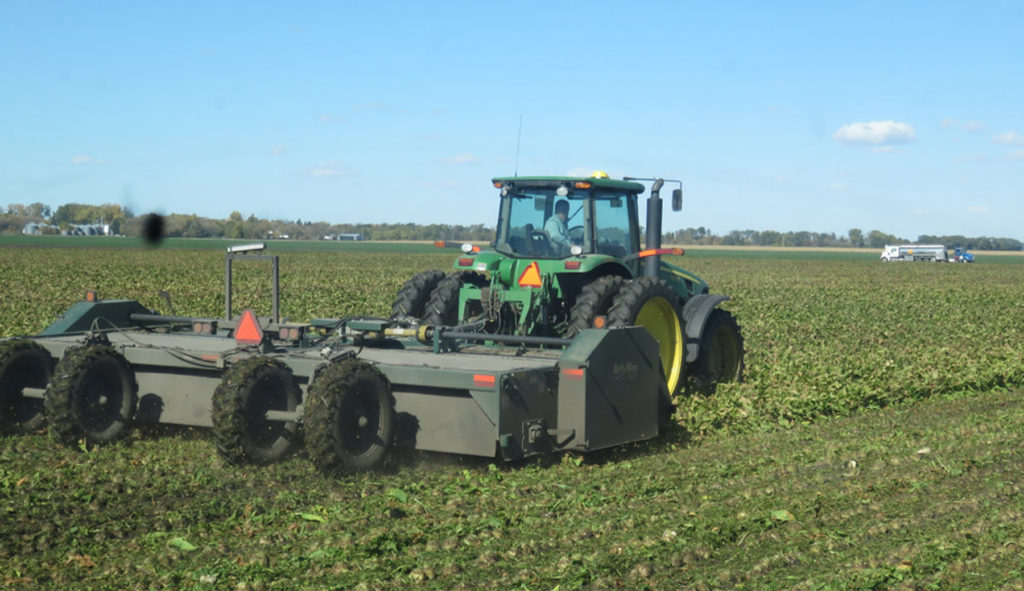
We begin by admiring the healthy field about to meet the defoliator that cuts the leafy tops off the sugarbeets. Shortly thereafter the rotating blades of the digger pops the sugarbeets to the ground surface for collecting.
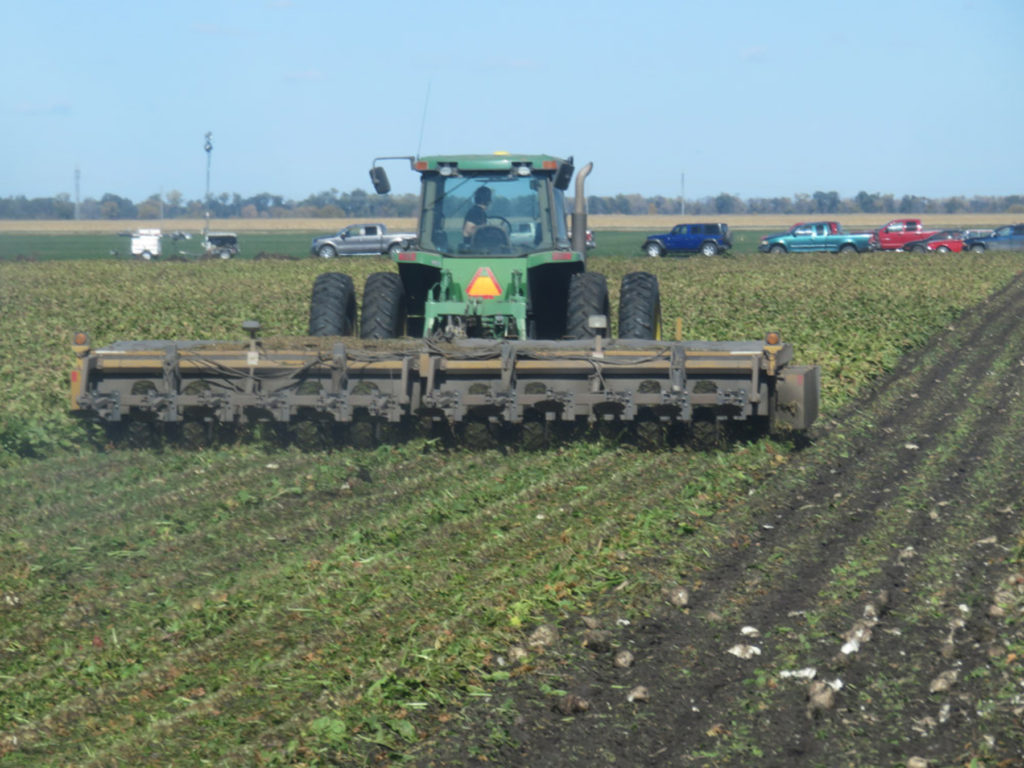
We are in line awaiting our turn at being filled. We maintain at least a truck length’s distance as we wait to ride parallel to the harvester, dubbed the “Ferris wheel”.
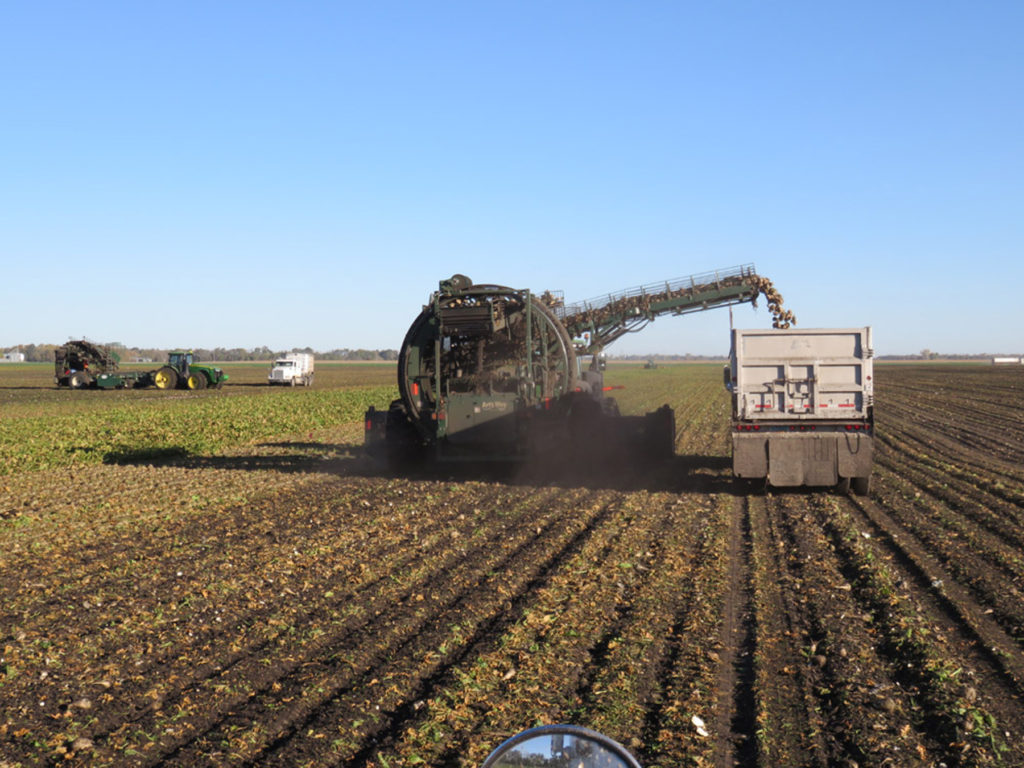
The harvester scrapes the beets into its continuously rotating wheel at ground level. As the wheel collects the sugarbeets, it shakes off excess dirt while elevating the beets 180 degrees to a large wire basket at the top that feeds the elevated conveyor channeling sugarbeets into the empty truck.
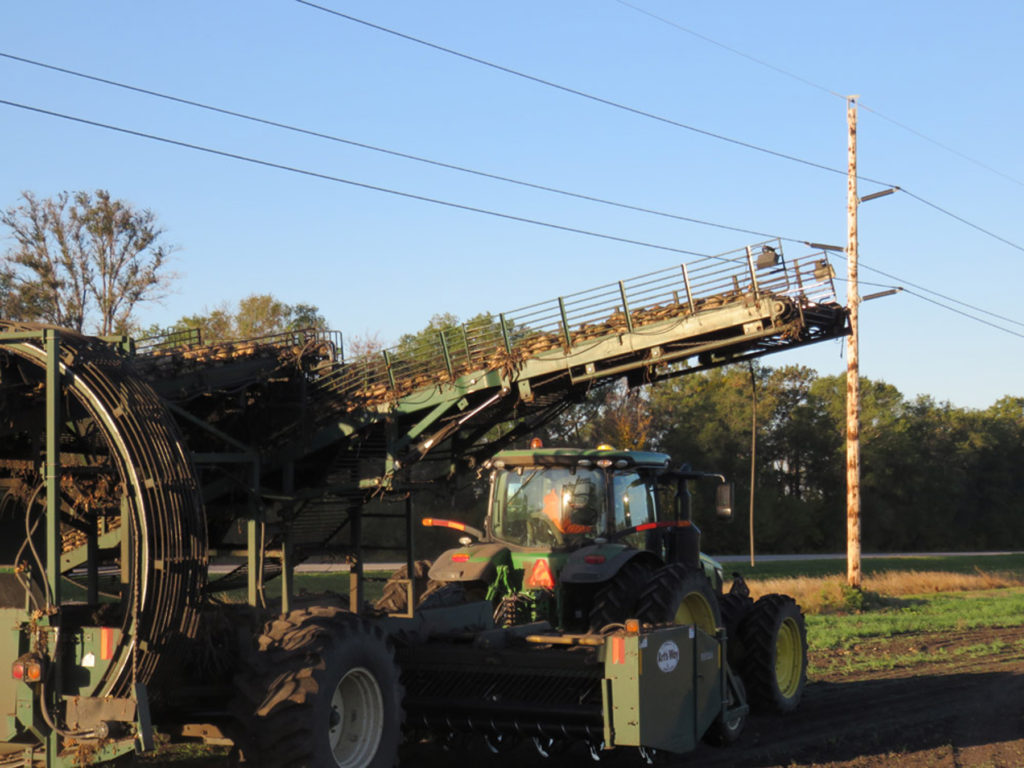
Once loading begins, we watched the arrow signal light up and listen for a quick horn beep when to advance the truck forward ten or more feet to evenly fill the load of sugarbeets. The tractor driver pulling the harvester controls the conveyor feeding the truck who starts the conveyor loading the front of the truck, then beeps his horn once and flashes the red arrow for us to advance forward another ten feet or so.
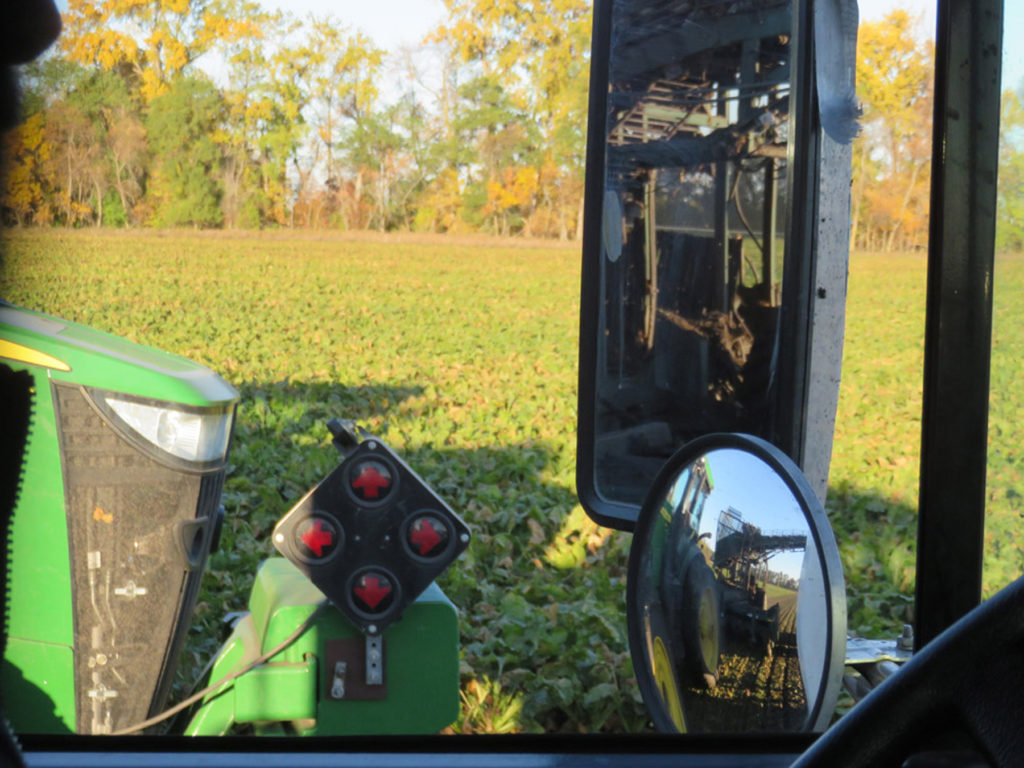
Usually by the third advance, we’re side-by-side with the tractor driver as his experienced eye gauged when to advance our truck forward until full. When signaled, we sped up for a few seconds until the driver signaled us to stop. After five or six runs, we got the hang of it and knew where to stop. Simple and systematic.
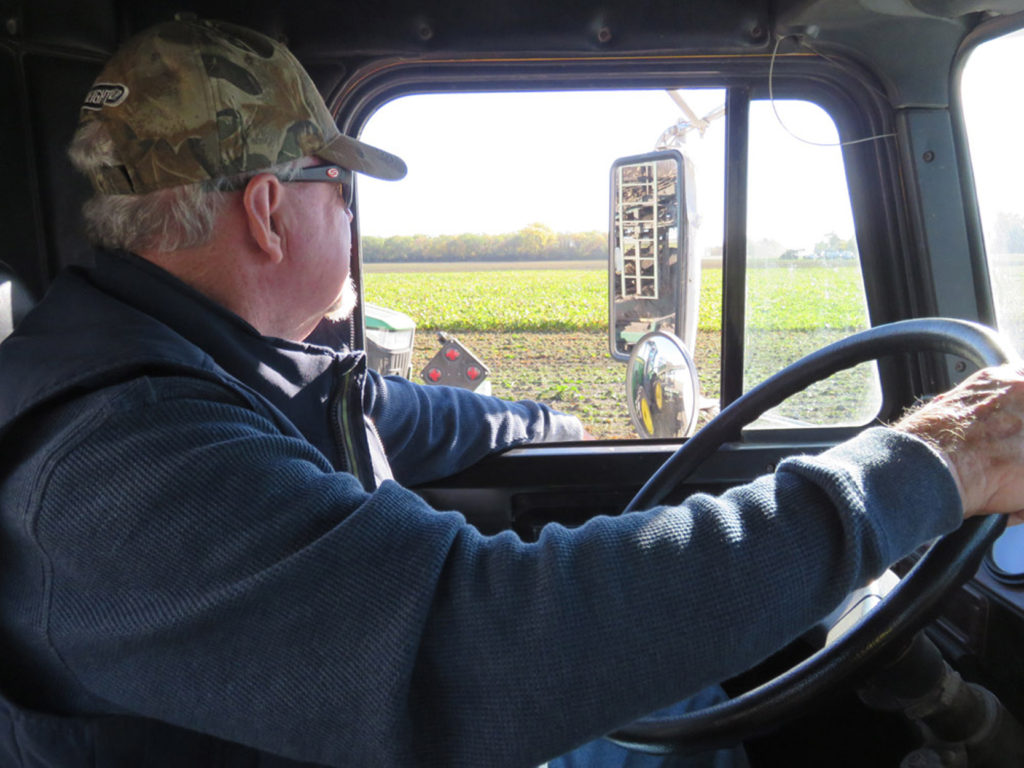
Once our truck was deemed full, the tractor driver beeped his horn three times indicating a full load and to leave the field and drive off to unload at the designated piler. As you approach the piler area, you must stop and pick up a ticket and weigh the truck. That ticket may also accompany a sample request for approximately 30 pounds of sugarbeets. That sample tracks the health and sugar content of the sugarbeets from each respective farm.
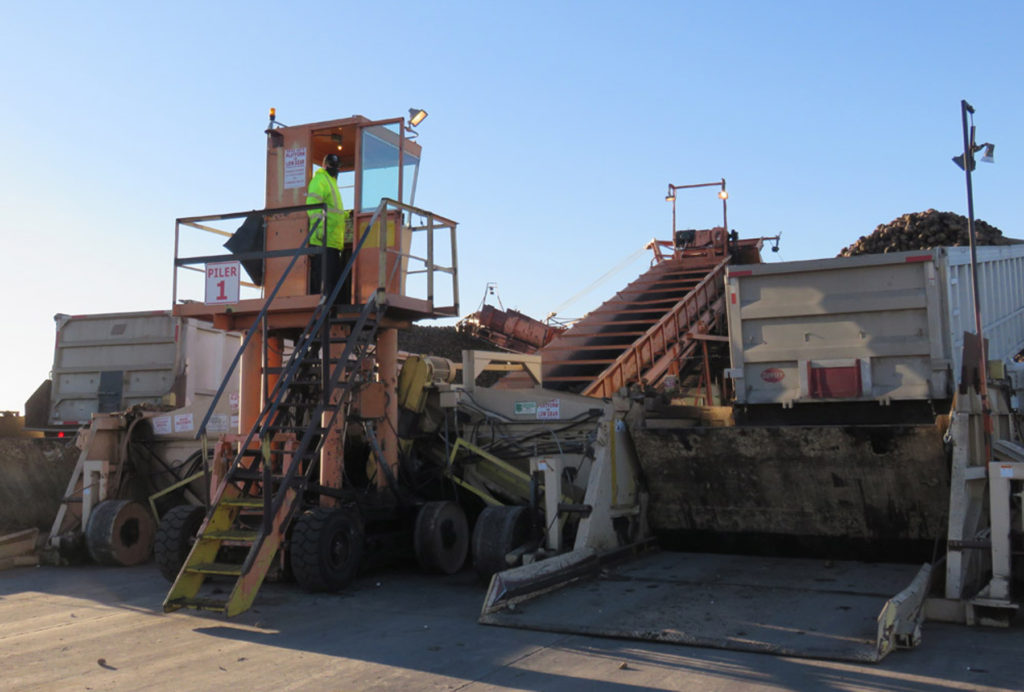
Now we’re lining up to drive up onto the chute. A worker will hand-signal us into the chute, guiding when to stop moving forward so the back of the truck is best positioned to begin dumping the load. The driver watches a lighted arrow sign on the piler that monitors the speed of the dump. The driver watches the signs when to start and stop raising the truck bed to incrementally offload the truck.
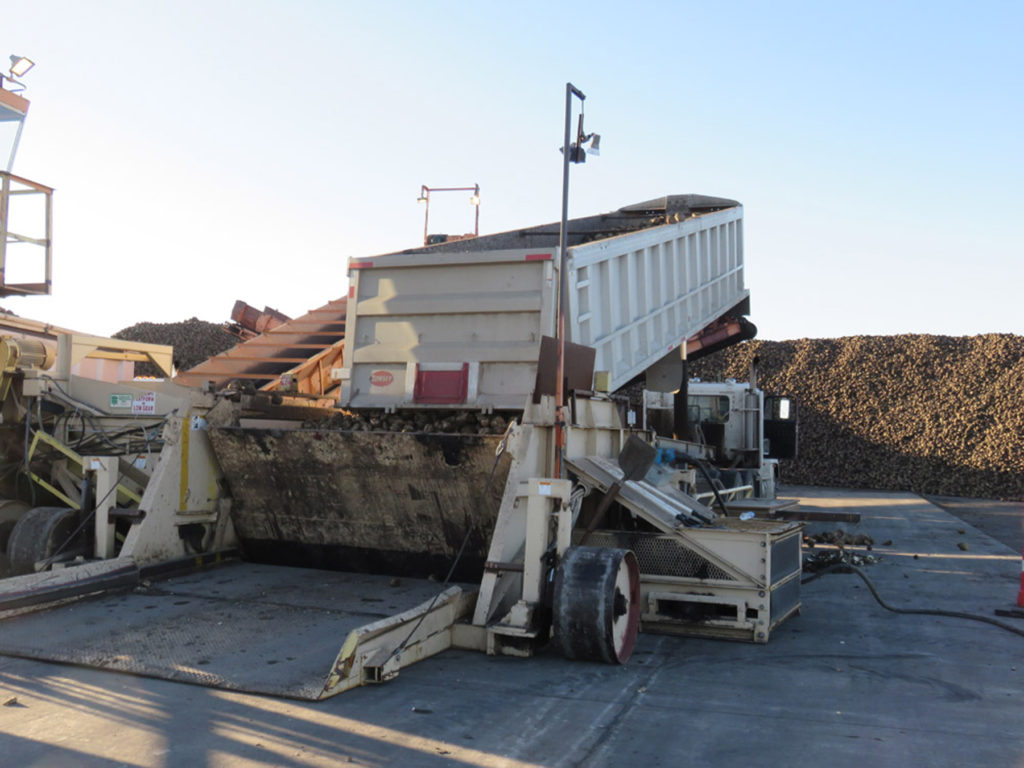
A lighted arrow indicates when to stop or continue raising the truck bed, so the chute doesn’t overflow. It’s not a pretty sight when that happens as beets fall over the chute and the operation ceases until the ground crew can pick up the scattered beets. After a couple of runs, we systematically lifted the truck in three increments, which seemed to work well at the piler.
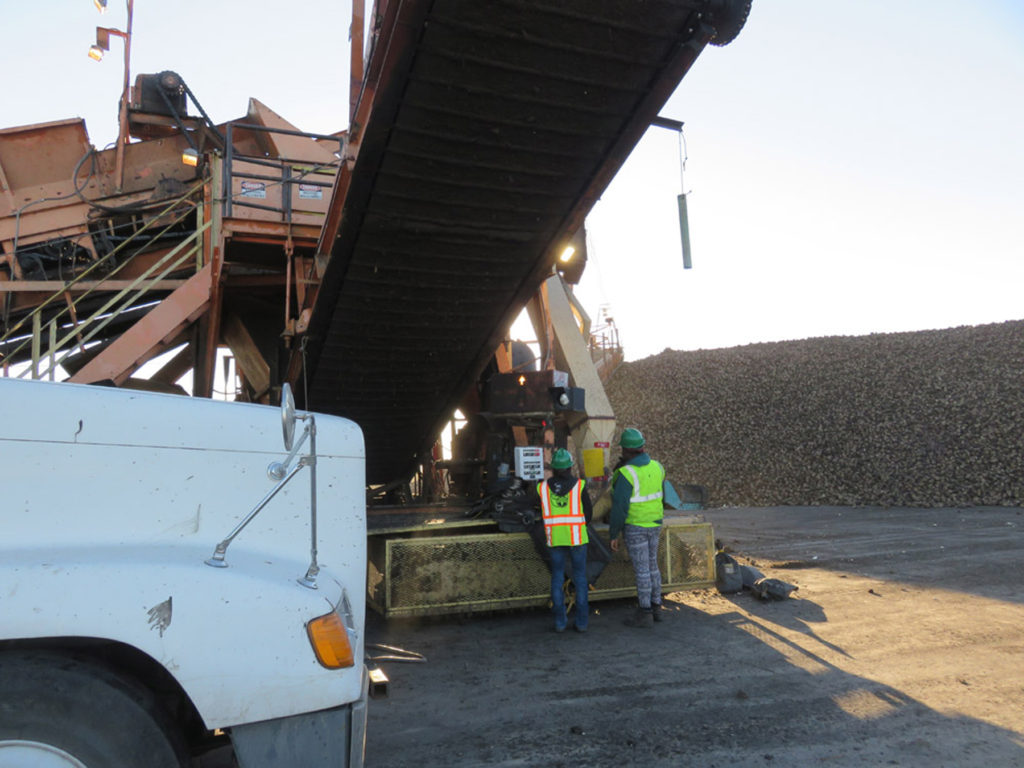
Next, a ground worker guided us forward to pick up excess dirt from that load which must be returned to the same field. Sounds weird, but there is a logical reason for this. If the dirt carries a fungus or disease, it does not need to contaminate the sugarbeets or another farm’s crop. Once you arrive back at the farm for another load, you must first dump the dirt and proceed back to the field to line up for another load. It doesn’t take long to develop a rhythm when riding wingman to the harvester, or by watching the rearview mirror in anticipation of moving the truck forward to balance the load. Either way, it was an interesting experience. Besides the Schatzke’s, we met several interesting folks that came back once again to drive for a couple of weeks.
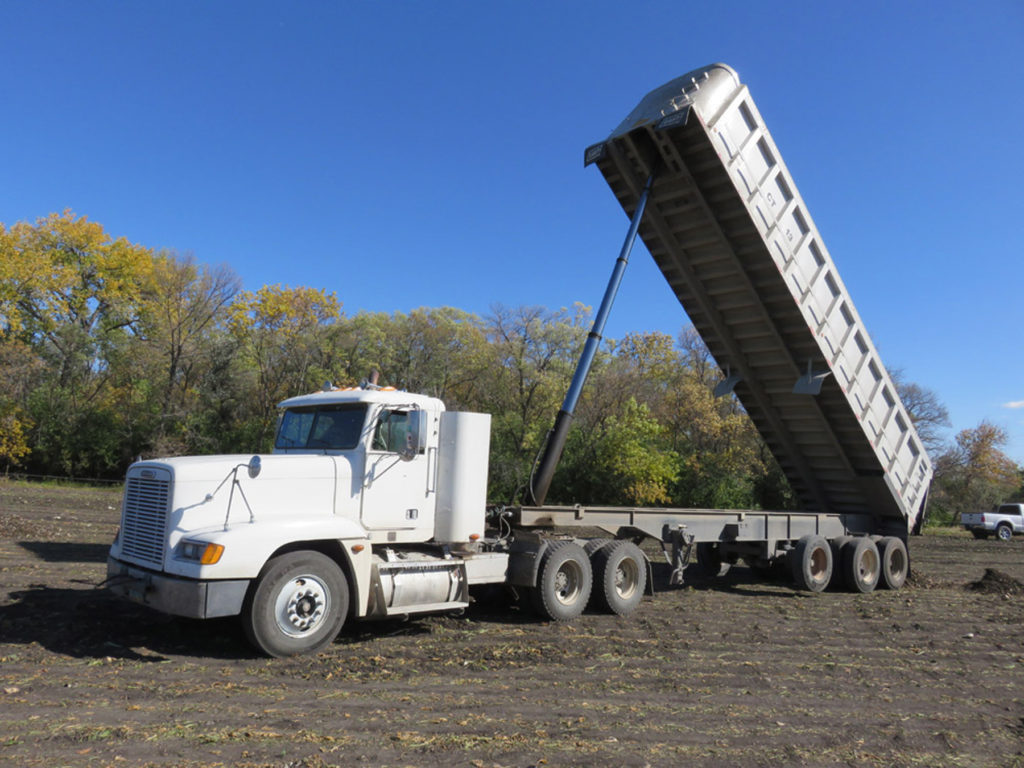
The Schatzke farm has been in the family since 1881. No longer do you envision a farmer with a pitchfork wearing bib overalls. Today, everything is high-tech, where one piece of equipment easily costs more than $200,000. Now multiply that times two or three, add tractors, trailers, wagons and several fleet trucks and you’ve just begun realizing how costly it is to be a farmer. Now add to that 80,000 pounds of seeds, pesticides, fertilizer and who knows what else purchased earlier in the year in the hopes of a bountiful sugarbeet harvest, irrespective of their other crops. The Schatzke’s harvested 2170 acres of sugarbeets last year. And, while we were there, they still had soybeans and corn to harvest, which also provides driving opportunities.

The Schatzke’s farm is in the 21st century, with qualified maintenance and repair personnel around-the-clock as any downtime of their equipment costs dearly as the retail price of sugar is dependent upon optimum weather and a non-eventful harvest.

When leaving, Jason Schatzke stated, “Farmers are always looking for extra help.” Driving for a sugarbeet farmer not only puts a few quarters in your pocket, but it is truly an eye-opening experience. To see if you would enjoy a couple of weeks in the agricultural world, visit the RRVSGA website or contact the co-op, watch the video, or visit the Schatzke’s Facebook page – schatzkefarms@schatzkefarms. You will gain an appreciation for those teaspoons of sugar you so dearly love in your morning coffee and cereal.
Read the FMCA Family RVing edited article published June 1, 2021 here: A Sweet Job – Family RVing Magazine
and published May 27, 2021 here: A different side of the sugarbeet harvest: This one is a little sweeter – RV Travel
Kate Doherty has been writing for more than 30 years in technical and general media. In her previous business, she and her spouse dealt with special projects within the military/government sector. Recently she published “Masquerade: A Logan Scott Novel” under the pen name Bryan Alexander, a thriller now available in eBook and paperback on Amazon. It’s a page-turner!
